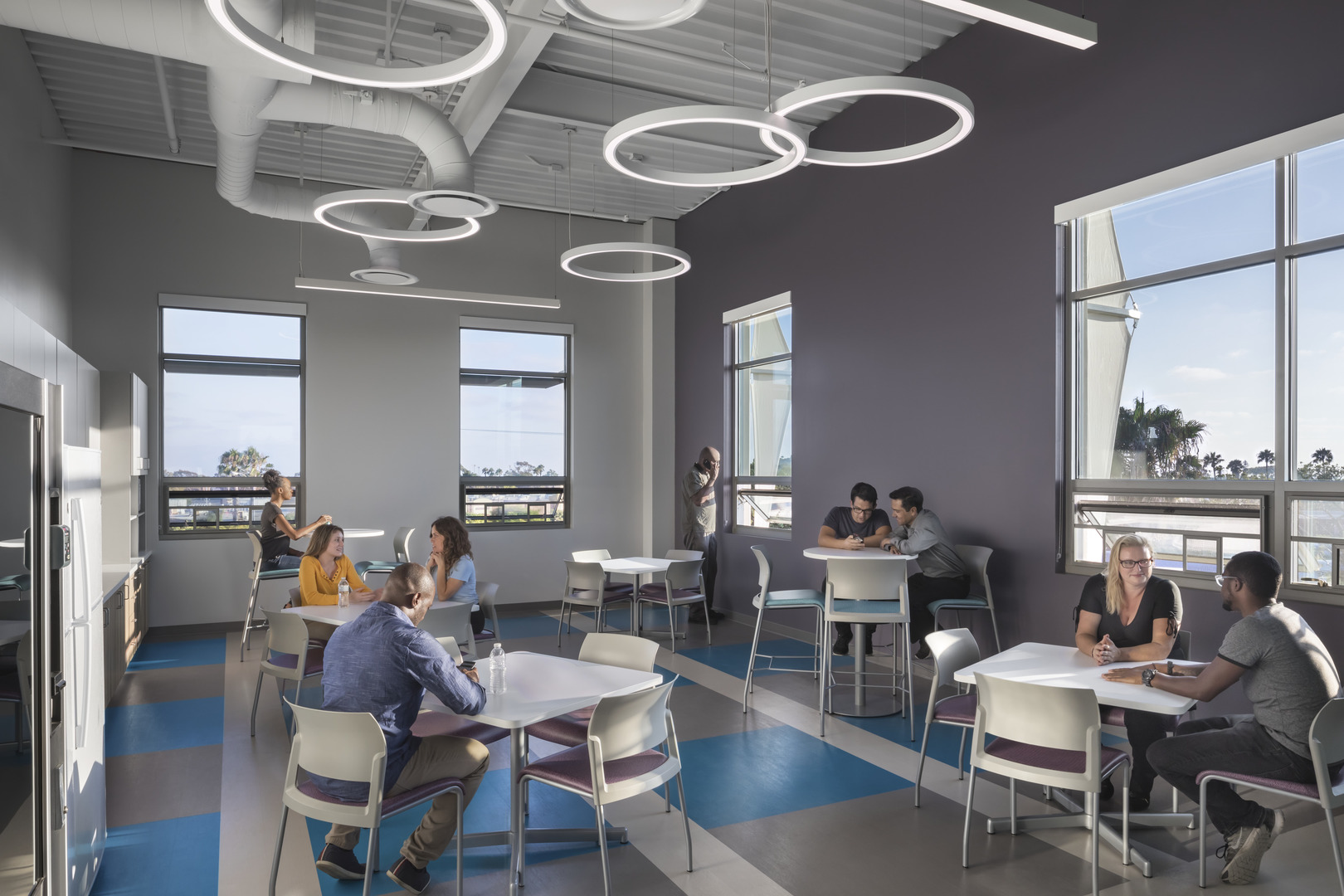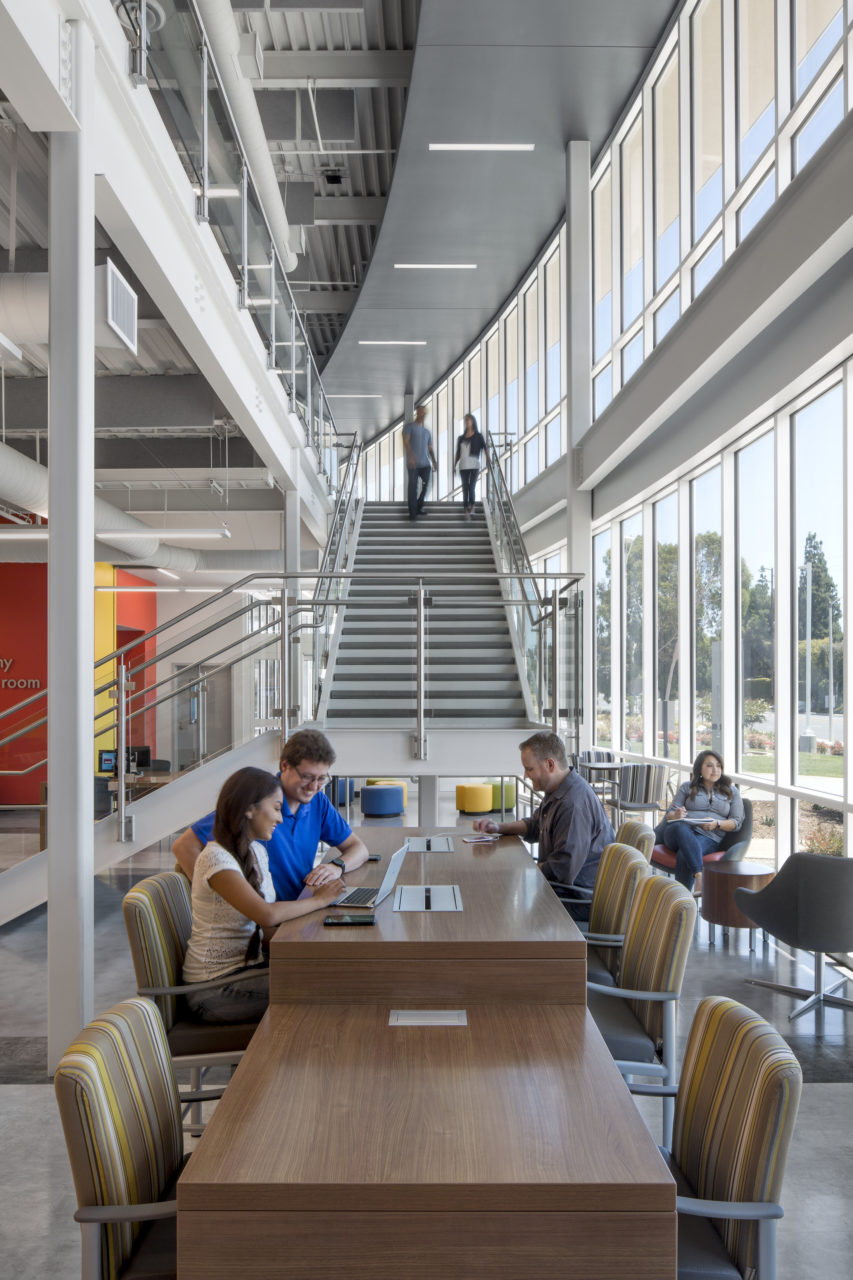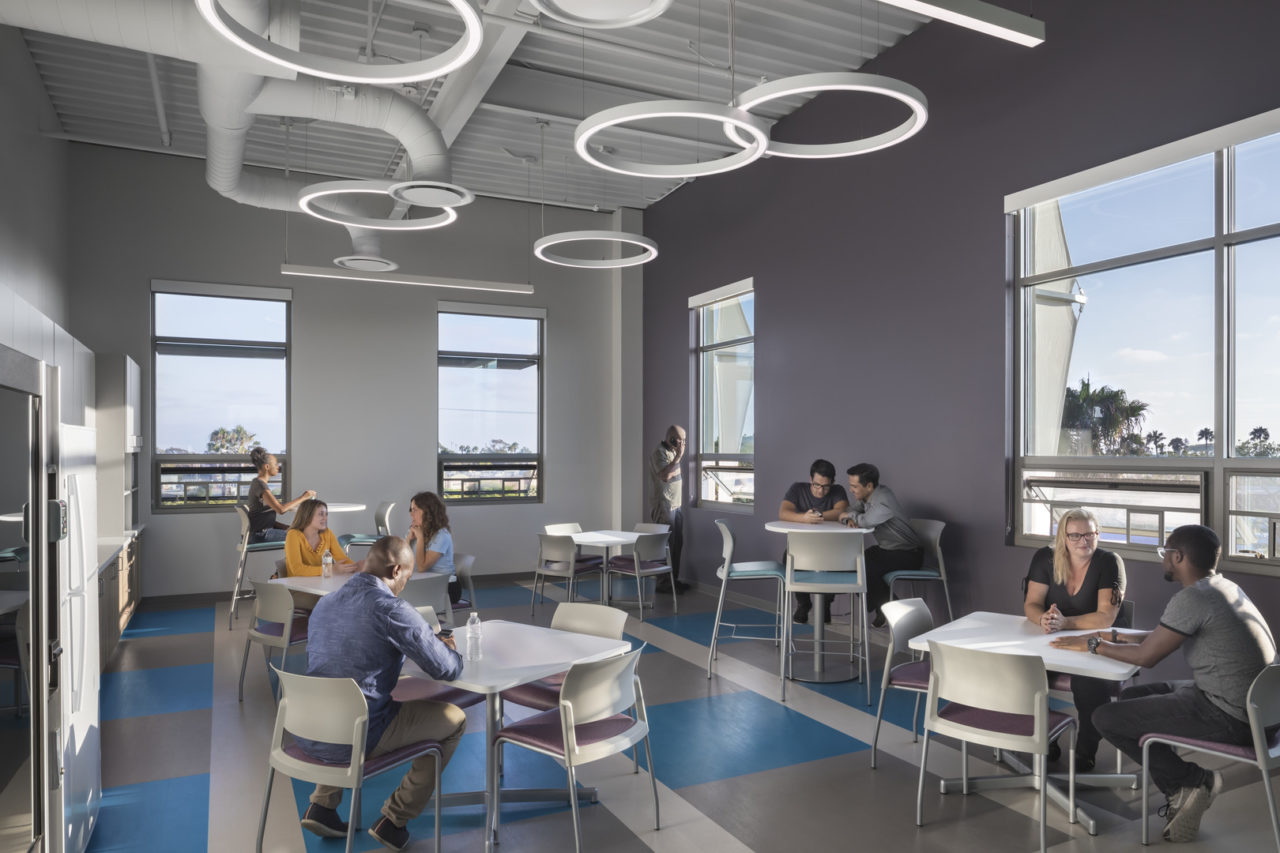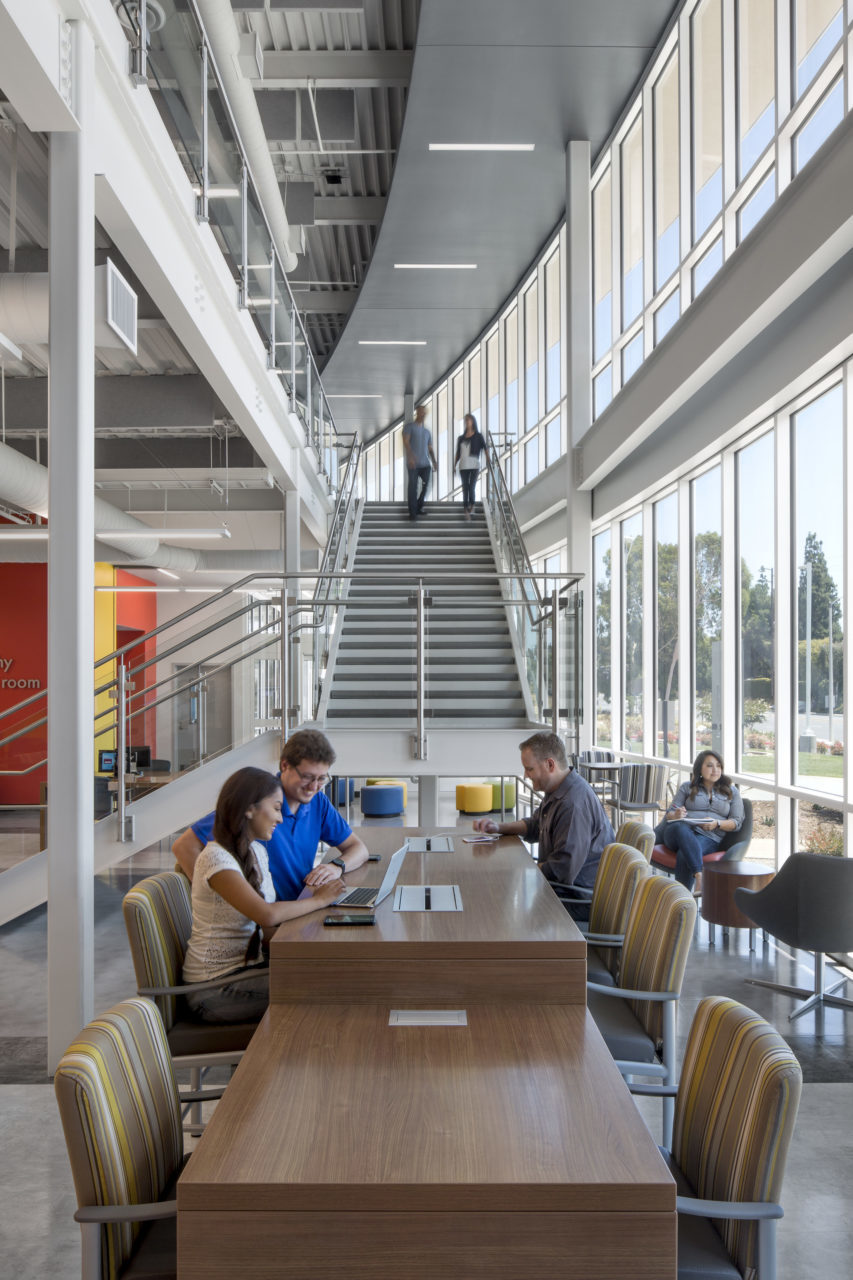When workers arrive at their offices, they want to enter bright spaces filled with abundant natural light-—they don’t want to walk into dimly lit, gloomy rooms. The benefits of natural light in office spaces are many. By designing offices with plenty of sunlight and views of the outdoors, you’ll provide your employees with a calm, welcoming environment that will make them healthier and more productive.
Health and Productivity Benefits of Natural Light in Office Spaces
Numerous studies have shown that natural light in office spaces improves worker satisfaction and productivity.
A 2017 study published by the National Sleep Foundation in its Sleep Health Journal found that workers who are exposed to high levels of natural light in offices reported better quality sleep compared to workers who weren’t exposed to any natural light. That’s because natural light helps regulate the body’s natural circadian rhythms (sleep-wake schedules).
Better sleep also leads to greater employee productivity and satisfaction. A 2017 study published by Rand Health Quarterly shows that workers who get plenty of rest accomplish more than their peers who get less than six hours of sleep per night. Moreover, a recent study conducted by Dr. Alan Hedge of Cornell University’s Department of Design and Environmental Analysis confirmed other benefits of natural light in the workplace, including:
- Reduced eye strain
- Fewer reports of headaches
- Improved mood
- Less drowsiness
- Fewer mistakes
Hedge believes that even a mere 2 percent increase in productivity is the “equivalent of an additional $100,000 of annual value for every 100 workers” earning an average yearly salary of $50,000.
Moreover, because natural light reduces the need for artificial lighting during daytime hours, energy costs are lowered. This has a positive impact on environmentally-conscious workers who appreciate that their employers are taking steps to conserve energy.
You can also maximize the benefits of natural light in office spaces by including biophilic elements. Adding indoor plants and fountains make spaces feel calmer, improving employee satisfaction. Light, natural paint colors, such as green, blue, and yellow, will brighten spaces and help light reflect throughout the space.
By designing with a focus on daylighting and bringing outdoor elements inside, you’ll create a sunny, productive workplace that is warm and satisfying.
 The Best Lighting Design Strategies for Office Spaces
The Best Lighting Design Strategies for Office Spaces
In order to reap all of the benefits and healing power of natural light in office spaces, you need to have a clear vision and trusted guidance. Experienced architects can help with both.
Here are a few specific daylighting design strategies that architects use to allow the most light into spaces to improve employee satisfaction while also taking into consideration different lighting challenges:
- Bring natural light to heavily used areas. Lighting that’s too dim or too harsh causes eyestrain and headaches. Access to natural daylight by the greatest number of workstations is one way to solve this problem, as natural light is bright but not as harsh as artificial light. Another solution is to install skylights. This is an ideal option if you have an open office plan with multiple cubicles or desks located at the center of the room where the light from side windows can’t reach.
- Use diffused light. While floor-to-ceiling windows and skylights help to distribute light throughout a space evenly, diffused light eliminates glare, hot spots, and sharp shadows that negatively impact visibility and productivity. You can create diffused light using frosted glass, softboxes, diffuser screens, and by angling light beams.
- Use a matte finish on walls. Light colors make spaces feel brighter and reflect light more effectively than dark colors, but paint sheen can produce glare. A matte finish will absorb most of the glare.
- Take advantage of landscaping. Surround the outside of ground-level office spaces with trees and shrubs that protect workers from glare. Beautiful landscaping also encourages your workers to take breaks outdoors.
- Install artificial lighting that mimics natural light. Because natural light needs to be supplemented with artificial light in offices, consider desktop task lights that emit light in the same spectrum as natural daylight. You can also install light dimmers that adjust automatically based on the amount of light present in a space. Tunable white-light systems change color based on the environment—on an overcast day, the color temperature might be 6500K, while at sunset, the temperature may be 1800K.
Most architecture design teams use a combination of the strategies above. The strategies you use will depend on the layout of your office, your budget, and the needs of your workers.
 How to Reap the Benefits of Natural Light in Office Spaces
How to Reap the Benefits of Natural Light in Office Spaces
Not only are there numerous health and productivity benefits of natural light in office spaces, but efficient daylighting strategies can also attract the best talent to your company. Natural light is appreciated by everyone. For this reason, implementing natural lighting into your office space should be a top priority.
According to a Leesman survey of more than 250,000 companies, about 72 percent of workers said that natural light was a very important feature. These workers experienced higher levels of productivity and engagement with their work.
The best way to attract new workers and ensure that your current employees are happy, healthy, and productive is by hiring an architecture firm to help you identify the areas where lighting can be improved and offer solutions based on your budget and spatial limitations. By relying on their expertise, you’ll experience all of the benefits of natural light in office spaces and have happier employees as a result.
For more information about the benefits of natural lighting in office spaces, contact HMC Architects today. Our design teams understand the power of natural lighting and strive to incorporate as much daylight as possible into projects. If you have specific questions about our lighting strategies, email Jon Richardson directly.




